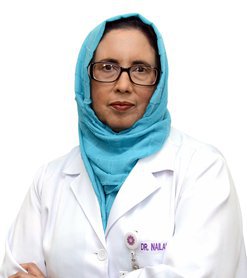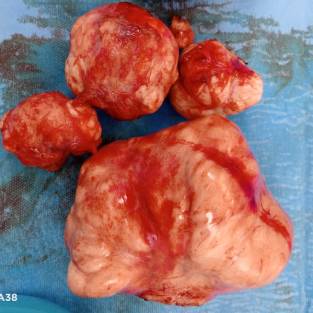

Fibroid is a benign ( non-cancerous growth) swelling arise from the muscle of the womb (uterus). The incidence is around 30%. They develop during women’s reproductive age of 16 to 50 years. The exact cause is not known but they have been linked to female hormones Estrogen. They tend to shrink after periods are stopped ie menopause. Genetics and ethnic background play a big role as well specially in African-Caribbean origin. Obese ladies have high risk of developing as they have high levels of Estrogens.
Many women are unaware of their presence as they will not get any symptoms.30% of patients may get heavy or painful periods, tummy pain, backache, frequency of urination or constipation or increase in tummy size or subfertility. They can lead to miscarriage, premature labour, obstructed labor as well. They can be diagnosed by chance during a routine gynae check or pelvic examination.
There are three types of fibroids: outside the womb(subserous), in the muscle of womb (intramural), in the lining of the womb (submucous or endometrial).
Asymptomatic fibroids don’t need treatment. Medications to relieve heaviness of periods can be very effective. Injections to shrink size of fibroids are effectively used.
The endometrial fibroids can be removed through telescope as well. Removal of large fibroids called Myomectomy is offered either through key hole route or like caesarean section where most of the fibroids are removed. For patients who have already completed their family and above 40 years of age are offered hysterectomy where the whole womb along with fibroids is removed.
Blood flow to fibroid can be stopped by using small particles by the radiologist called Embolization.
I recently operated on young 33 years African unmarried nulliparous lady with large abdominal swelling heavy painful periods, incomplete emptying of bladder, constipation .
On abdominal examination there was abdominopelvic firm nontender mass about 28-30weeks of pregnancy which was non-tender. Ultrasound pelvis confirmed multifibroid uterus the largest was about 14-16cms. MRI pelvis confirmed the diagnosis of fibroids.
She was given the option of medical treatment, embolization but she opted for myomectomy which was done uneventfully through caesarean section like incision. Usually when fibroids are so large mostly gynaecologist use the vertical incision which cosmetically does not look appealing. She is still young unmarried and wanted to have a scar which will not be to obvious with quick recovery.
She was delighted with the outcome & made uneventful recovery with minimal blood loss and was discharged home on day 2.

